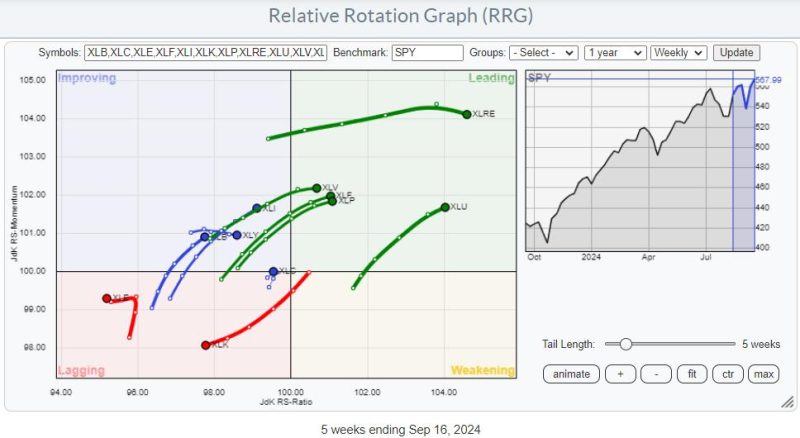Sector Rotation Dilemma: Navigating Market Trends
Investors are constantly faced with the challenge of determining where to allocate their funds within the market. One popular strategy that many employ is sector rotation, which involves moving investments between different sectors based on market conditions. However, as with any investment strategy, sector rotation comes with its own set of dilemmas and considerations.
Understanding sector rotation requires a keen awareness of market trends and economic indicators. The idea behind sector rotation is to anticipate which sectors will outperform or underperform in the upcoming market cycle. This can be a complex task, as market dynamics are influenced by a myriad of factors, such as interest rates, geopolitical events, and technological advancements.
One of the primary dilemmas when it comes to sector rotation is timing. Investors must determine when to rotate into a particular sector in order to capture potential gains. However, timing the market is notoriously difficult, and even the most seasoned investors can struggle to predict short-term market movements accurately.
Moreover, sector rotation requires a deep understanding of the individual sectors themselves. Each sector has its own unique set of drivers and risks, and investors must conduct thorough research to identify which sectors are poised for growth and which may face headwinds. This can be a time-consuming process that requires constant monitoring of market developments.
Another dilemma that investors face with sector rotation is the risk of missing out on potential returns. If an investor rotates out of a sector too early or too late, they may miss out on significant gains that could have been realized by staying invested. Balancing the desire to maximize returns with the need to manage risk is a delicate dance that investors must navigate carefully.
Furthermore, sector rotation can be influenced by external factors that are difficult to predict. Unexpected events, such as natural disasters or regulatory changes, can disrupt market dynamics and upend sector performance. Investors must remain vigilant and adaptable in order to respond effectively to these unforeseen circumstances.
Despite the challenges associated with sector rotation, it remains a popular strategy among investors seeking to capitalize on market trends. By carefully researching sector performance, monitoring economic indicators, and staying informed on market developments, investors can enhance their ability to make informed decisions regarding sector rotation.
In conclusion, sector rotation presents investors with a dilemma that requires a nuanced understanding of market trends and sector dynamics. By carefully considering timing, sector-specific factors, and external influences, investors can navigate the complexities of sector rotation and potentially enhance their investment returns. While sector rotation is not without risks, it remains a valuable tool for investors seeking to capitalize on changing market conditions and maximize their investment portfolios.

